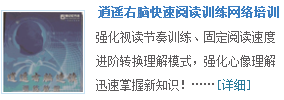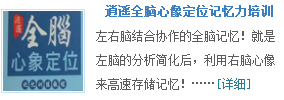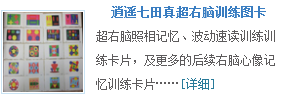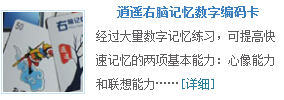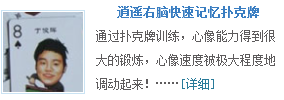深圳科学高中2013-2014学年第一学期期中考试试题年级:高二 科目:英语(国际体系)命题人:林一霄 审题人:林一霄 考试时长:90分钟 卷面总分:100分注意事项:答案写在答题卡指定的位置上,写在试题卷上无效.选择题作答必须用2B铅笔,修改时用橡皮擦干净.解答题作答必须用黑色墨迹签字笔或钢笔填写,答题不得超出答题框.托福阅读(共一节,满分60分)阅读下列文章,根据文章内容回答问题,每个选项2分,共60分。The TelegraphAs properties of electricity became better understood in the early nineteenth century, and as it became easier and easier to manipulate, American and European scientists alike experimented with various devices for sending messages as electric signals over wire. although the first electrical telegraph was created, patented and put into use in the united kingdom in 1837, a second, and much more effective, electrical telegraph was independently developed in the united states during the same period. Patented by Samuel mores, and thus named the mores code(a system for sending messages, using combinations of long and short sounds or flashes of light to represent letters of the alphabet and numbers), it was this second American version that was quickly deployed across the globe over the next two decades.Though Morse claimed most of the recognition for this innovative device, in actuality it was made possible through the collaborative effort of several great thinker of the time. In 1830, another American- Joseph Henry- first demonstrated the potential of using electricity as a communications medium when he sent an electric current over one mile of wire to activate an electromagnet, which caused a bell to strike. Morse’s modifications successfully transformed Henry’s invention into a commercially exploitable technology. Morse used pulses(a single short increase in the amount of light, sound or electricity produced by a machine,etc.) of current to deflect an electromagnet, which moved a marker to produce written codes on a strip of paper. Although he completed his first working prototype in 1837, he was unable to send messages over long distances; the current could only be made to travel for 40 feet. However, after applying some of the specifications Joseph Henry had outlined some years before, he was able to transmit messages through ten miles of wire. Thus the problem of distance had seemingly been overcome.Much to the dismay of Morse, his potentially ground-breaking invention was unappreciated by a short-sighted American public. Only after five years of insistent persuasion did Morse succeed in procuring government funding by convincing congress of the revolutionary potential of the telegraph. In 1838, congress approved USD 30000 to construct an experimental telegraph line from Washington D.C. to Baltimore, a distance of forty miles. Upon completion of this line, Morse provided congress and the American public with a demonstration by transmitting the words “what hath god wrought?” from Washington to Baltimore. Even more to the dismay of Morse, congress was unmoved by this success and they were unwilling to devote public funding to further the development of the telegraph. Samuel Morse and his associates had no alternative but to obtain private funding for the extension of their line to Philadelphia and New York.Private enterprise did not wait for public sanction to move forward and capitalize on the new technology. Telegraph businesses were established in the east, south and Midwest. Dispatching trains by telegraph started in 1851, the same year western union began operations. Western union set up the first transcontinental telegraph line in 1861. Thereafter, the network was extended with remarkable speed. And the system evolved as it expanded. The original Morse telegraph was printed code on tape, however, it soon became common practice to send by key and receive by ear. A trained telegraph operator could transmit 40-50 words per minute. The telegraph monopolized long distance communication for almost 20 years, at which point a rival technology was developed that would once again change the face of communication- the telephone.Even with this new competitor forcing its way onto the scene, the telegraph held its place as an essential communication tool. In fact, the competition pushed the telegraph to new levels of efficiency. In 1892, Edison received a patent for a two-way telegraph that could transmit and receive simultaneously. Soon after, multiplexing allowed for the telegraph transmit up to 8 messages over a single wire, thus increasing the efficiency and strengthening the competitive edge of the telegraph. These improvements not only meant that the amount of information relayed could be increased, but more importantly, that the cost of sending messages was also significantly decreased. This evolutionary advancement allowed the telegraph to hold its own as a key communication tool for both the public and private good despite that challenge posed by emerging new technologies.Paragraph 1: As properties of electricity became better understood in the early nineteenth century, and as it became easier and easier to manipulate, American and European scientists alike experimented with various devices for sending messages as electric signals over wire. although the first electrical telegraph was created, patented and put into use in the united kingdom in 1837, a second, and much more effective, electrical telegraph was independently developed in the united states during the same period. Patented by Samuel mores, and thus named the mores code, it was this second American version that was quickly deployed across the globe over the next two decades.1. The passage focuses mainly on what aspect of electricity?A. problems associated with using long wires to conduct electric currentsB. its use as a medium for telecommunicationC. adapting electrical lines as phone linesD. using electrical lines to provide remote areas with power2. The word “deployed” in the passage is closest in meaning toA. positionedB. plannedC. testedD. operatedParagraph 2: Though Morse claimed most of the recognition for this innovative device, in actuality it was made possible through the collaborative effort of several great thinker of the time. In 1830, another American- Joseph Henry- first demonstrated the potential of using electricity as a communications medium when he sent an electric current over one mile of wire to activate an electromagnet, which caused a bell to strike. Morse’s modifications successfully transformed Henry’s invention into a commercially exploitable technology. Morse used pulses of current to deflect an electromagnet, which moved a marker to produce written codes on a strip of paper. Although he completed his first working prototype in 1837, he was unable to send messages over long distances; the current could only be made to travel for 40 feet. However, after applying some of the specifications Joseph Henry had outlined some years before, he was able to transmit messages through ten miles of wire. Thus the problem of distance had seemingly been overcome.3. According to the passage, why was Morse’s prototype telegraph inadequate?A. it could not send complex messages.B. it was very time consuming to use.C. it could not be used over long distances.D. it would quickly become obsolete.Paragraph 3: Much to the dismay of Morse, his potentially ground-breaking invention was unappreciated by a short-sighted American public. Only after five years of insistent persuasion did Morse succeed in procuring government funding by convincing congress of the revolutionary potential of the telegraph. In 1838, congress approved USD 30000 to construct an experimental telegraph line from Washington D.C. to Baltimore, a distance of forty miles. Upon completion of this line, Morse provided congress and the American public with a demonstration by transmitting the words “what hath god wrought?” from广东省深圳科学高中2013-2014学年高二第一学期期中考试英语试题(国际体系)
本文来自:逍遥右脑记忆 http://www.jiyifa.net/gaoer/93976.html
相关阅读:
闂佺粯顨呴悧濠傖缚閸喓鐝堕柣妤€鐗婇~鏍煥濞戞瑧顣叉繝鈧导鏉戞闁搞儜鍐╂殽闁诲海鎳撳﹢閬嶅极鏉堛劎顩查柟鐑樻磻缁挾绱撻崘鈺佺仼闁轰降鍊濋獮瀣偪椤栨碍顔囬梺鍛婄懄閸ㄨ偐娑甸埀顒勬煟濮樼厧娅欑紒杈ㄧ箘閹风娀濡烽敂鐣屸偓顕€鎮峰▎蹇撯偓濠氬磻閿濆棛顩烽柛娑卞墮閺佲晠鎮跺☉鏍у缂傚秵妫冮幊鎾诲川椤旇姤瀚虫繛瀛樼矋娴滀粙鍩€椤掆偓閸婄懓锕㈤幍顔惧崥婵炲棗娴烽惌宀勬煙缂佹ê濮冪紒璺虹仛缁岄亶鍩勯崘褏绀€闁诲孩绋掗敋闁稿绉剁划姘洪鍜冪吹闂佸搫鐗嗙粔瀛樻叏閻斿吋鏅悘鐐跺亹閻熸繈鏌熼弸顐㈠姕婵犫偓娓氣偓楠炲秹鍩€椤掑嫬瀚夊璺侯儐缂嶁偓闂佹寧绋戞總鏃傜箔婢舵劕绠ラ柟绋块椤庢捇鏌i埡鍏﹀綊宕h閳绘棃寮撮悙鍏哥矗闁荤姵鍔х徊濂稿箲閵忋倕违闁稿本鍑瑰ú銈夋煕濞嗘劕鐏╂鐐叉喘瀵敻顢楅崒婊冭闂佸搫鐗嗛ˇ鎵矓閸︻厸鍋撳顒佹拱濠德や含閹噣顢樺┑瀣當闂佸搫顧€閹凤拷/闁哄鏅滅换鍐兜閼稿灚浜ゆ繝闈涒看濞兼劙鏌i妸銉ヮ仼闁哥偛顕埀顒€婀卞▍銏㈡濠靛牊瀚氱€瑰嫭婢樼徊娲⒑椤愶紕绐旈柛瀣墬缁傛帡骞嗛弶鎸庮啎 4509422@qq.com 婵炴垶鎸鹃崑鎾存叏閵堝鏅悘鐐跺亹椤忚京绱撴担鍝ョ闁绘搫绱曢埀顒€婀遍崕鎴犳濠靛瀚夋い鎺戝€昏ぐ鏌ユ倶韫囨挻顥犻柣婵囩洴瀹曟氨鎷犻幓鎺斾患闂傚倸瀚ㄩ崐鎴﹀焵椤掑﹥瀚�
广东省深圳科学高中2013-2014学年高二第一学期期中考试英语试题
编辑: 逍遥路
关键词: 高二
来源: 高中学习网
- 上一篇:广东省实验中学2013-2014学年高二上学期期末模块考试英语试卷含
- 下一篇:没有了

